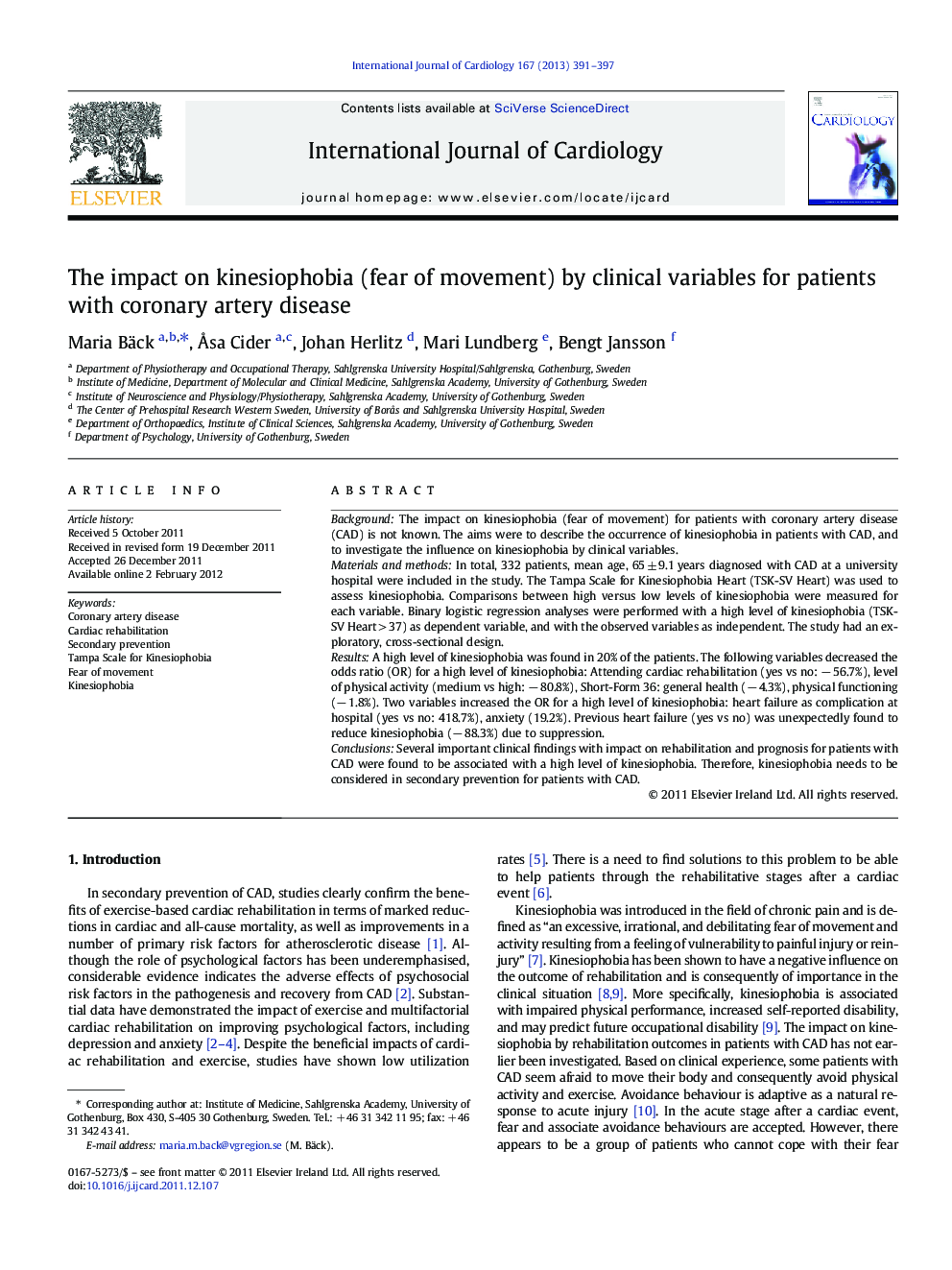| کد مقاله | کد نشریه | سال انتشار | مقاله انگلیسی | نسخه تمام متن |
|---|---|---|---|---|
| 5975260 | 1576216 | 2013 | 7 صفحه PDF | دانلود رایگان |
BackgroundThe impact on kinesiophobia (fear of movement) for patients with coronary artery disease (CAD) is not known. The aims were to describe the occurrence of kinesiophobia in patients with CAD, and to investigate the influence on kinesiophobia by clinical variables.Materials and methodsIn total, 332 patients, mean age, 65 ± 9.1 years diagnosed with CAD at a university hospital were included in the study. The Tampa Scale for Kinesiophobia Heart (TSK-SV Heart) was used to assess kinesiophobia. Comparisons between high versus low levels of kinesiophobia were measured for each variable. Binary logistic regression analyses were performed with a high level of kinesiophobia (TSK-SV Heart > 37) as dependent variable, and with the observed variables as independent. The study had an exploratory, cross-sectional design.ResultsA high level of kinesiophobia was found in 20% of the patients. The following variables decreased the odds ratio (OR) for a high level of kinesiophobia: Attending cardiac rehabilitation (yes vs no: â 56.7%), level of physical activity (medium vs high: â 80.8%), Short-Form 36: general health (â 4.3%), physical functioning (â 1.8%). Two variables increased the OR for a high level of kinesiophobia: heart failure as complication at hospital (yes vs no: 418.7%), anxiety (19.2%). Previous heart failure (yes vs no) was unexpectedly found to reduce kinesiophobia (â 88.3%) due to suppression.ConclusionsSeveral important clinical findings with impact on rehabilitation and prognosis for patients with CAD were found to be associated with a high level of kinesiophobia. Therefore, kinesiophobia needs to be considered in secondary prevention for patients with CAD.
Journal: International Journal of Cardiology - Volume 167, Issue 2, 31 July 2013, Pages 391-397
